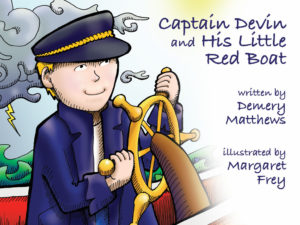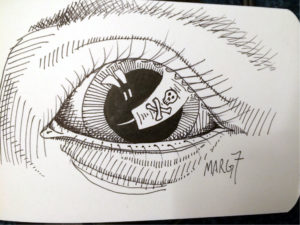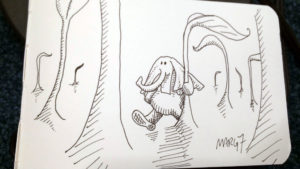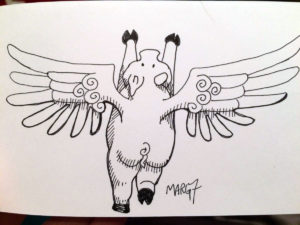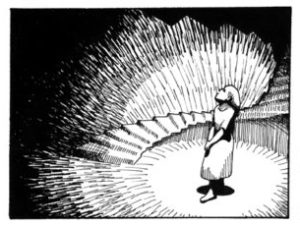Graphic Novels
I love them. I’ve loved them since college. My roommate’s boyfriend would leave stacks of them when he came to visit. That’s how I first was introduced to Neil Gaiman’s Sandman, and it was all over after that. My roommate didn’t even read them, but I convinced her not to tell her boyfriend, so every time he came by, he would bring a fresh pile and remove the old.
That was over twenty years ago, but I still devour graphic novels hungrily.
I went to my first writer’s conference last month, World Fantasy in San Antonio, November 2-5. I went because that same roommate, Mary Anne Mohanraj, now an accomplished author, said, “You should go. It’ll be fun. I’ll show you around.” Which she did, and it was great. But we struggled with how she would introduce me. I’ve been writing for years, but in secret. I have five complete NaNoWriMo novels that maybe only two people have ever read. Nothing published. It was easier to show people my art. So I was introduced as her college roommate who has been writing in secret for years and is a fabulous artist, look at these pieces she has online. And then friends of hers would see me elsewhere in the conference and introduce me to their friends as a fabulous artist, really you should see her stuff. The writer part got dropped because there wasn’t a publication to hang it on.
Which is fine. It was great meeting editors and publishers and fellow writers. I wasn’t there so much to sell myself (yet) as to find out what kind of product I am.
One of the panels was ‘Artist/Authors’. These were people who had started out as artists illustrating other people’s books, but decided that they had their own stories to tell.
I had illustrated a children’s book with a fellow parent, Demery Matthews, whom I met through my kid’s school. It was something I offered for a school fundraiser: I would develop a character and do a few black-and-white images for someone’s story. Demery, an architect (whom I strongly recommend for all your building needs), had this story she had written for her boys years ago. So I did a few illustrations and we loved them and did a Kickstarter for it and distributed it in glorious full color to a bunch of family and friends. You can buy a copy on Amazon if you like, Captain Devin and His Little Red Boat. It’s fun.
I’m glad I did it. It’s cute, and now I know I can. It might never have happened if I didn’t have a partner. But I have my own drawer full of stories, and I felt a little bit as though I had betrayed them.
And it’s like panelist Jeffrey Alan Love said, “Illustrating other people’s work is like being in a cover band.” Not that there aren’t really good cover bands out there, but it’s not the same as being the sole author of your own work.
The Artist/Author: A New Wave of Storytellers panel was moderated by Irene Gallo, and populated by Kathleen Jennings, John Picacio Moteria, Jeffrey Alan Love, and Gregory Manchess.
John Picacio Moteria was doing a series of illustrations for a card game, the Loteria Grande, using fantasy characters, which was based on a Mexican game where you had to get so many in a row (and here I had a bit of a twinge over how much it sounded like a project I had just started with my own friends). His evolution toward author began when he realized he was weaving background stories in his head for all the characters in the illustrations, and that they were linked in a common world, a running narrative. So, instead of just a card game, it became a story, with a card game on the side. It’s very pretty. I plan on buying it when it comes out. My favorite line of his from the panel is about when he realized the images were becoming more nuanced and connected: they became “more eye protein than eye candy.”
Gregory Manchess, who does giant oil paintings with lots of palletknife-work, is not your typical graphic novel artist. But he too, after a career of being commissioned for numerous covers, decided he had his own stories to tell. I bought the book, Above the Timberline. It’s gorgeous. There’s text in it, but there’s so much story in the images themselves that the text is almost a distraction. Or the words serve to slow down the observer enough to appreciate the images more. When I started reading the book, after overcoming my initial awe of the style, I began to wonder if it was too ponderous. It wasn’t the clean pen-and-ink I was used to in a graphic novel. But then I remembered my own advice when approaching new art, to ditch my expectations and shut up. Look and listen first.
Then I was able to notice things. As ‘realistic’ as his subject matter and composition were, his use of broad strokes and the pallet knife frequently suggested details rather than explicitly representing them. I really appreciate that in art. It engages the observer’s brain to fill in the details and appeals to a subconscious curiosity. His snowy, windy backgrounds and stark, dark figures use extreme contrast to create drama. even in still scenes. The depth of his landscapes is cinematic.
Yep. It’s pretty.
If I were in a different emotional place, I might have been intimidated out of ever showing my art again, but next to him on the panel were Jeffrey Alan Love and Kathleen Jennings who were showing their monochromatic prints, or their silhouetted cutouts. And I admired them too.
I am not a masterful oil painter it’s true, but neither are the other artists on the panel, and they’re telling different kinds of stories. And at some point, all these people had to decide what they were, in a creative industry that struggled with finding a category for them. It was good to see bits of my own struggle reflected on the outside. The echo chamber in my head had been getting loud and crowded.
A related panel, New Graphic Novels You Should Be Reading, was similarly awesome. There was a retired staffer from DC Comics moderating, Bob Wayne. He coauthored Time Masters and has written some Wild Cards stuff. There were three panel members. Marta Murvosh is a librarian by day, and contributor to Tales of the Sunrise Lands and Legends of the Mountain State. Carol Burrell (aka Klio) is a writer and editor for Workman Publishing. Finally, Leo Vladimirsky has stories on Boing Boing and in F&SF. They recommended examples of everything from children’s graphic novels to the almost pornographically intense adult tomes. All of which I enjoy, so when I list them below, be warned that they might not all be appropriate for your kids. (After I’ve been through them all, I’ll write up a list that is good for kids, since I’ll be curating for my own 8 year old.)
On the subject of graphic novels for kids, Marta, the librarian, made some good points. Some teachers don’t like their students reading graphic novels, because it’s ‘cheating’, and it keeps them from reading ‘real’ books which could be helping them develop their reading skills. I’ve never understood this. Graphic novels have plenty of text, and the stories aren’t necessarily even all fiction, another prejudice some teachers have. Some of the titles which were recommended are even historical or political nonfiction. Important stories well told. But all these illustrated stories help people develop empathy, just like un-illustrated novels do. They also help students develop visual literacy.
The panel was about new works, but the panelists did mention a few that they credit as the first visual stories they read that got them started down this path. Sandman was mentioned of course, but also Elfquest, the collected Prince Valiant, Wonder Woman (those molemen, amiright?), Dark Knight, and Chandler.
But on to the recommendations. I know my librarian friend (Danica, this is for you) will be interested, but others of you may also want to know what new graphic novels have been generating buzz. Saga, Bitch Planet, and Lumberjanes were all mentioned, of course, but considered maybe not new enough for this panel. (I would recommend all three of those, although only Lumberjanes for kids.)
The List:
Heathen – Natasha Alterici
March – a history of civil rights – Congressman John Lewis
World Without Fish
Trinity: A Graphic History of the First Atomic Bomb
Moon Girl & Devil Dinosaur
Malice in Ovenland
Princess Princess (manga)
Nathan Nails Hazardous Tales
Lowriders in Space – Cathy Camper
The Nameless City Series – Faith Erin Hicks
Climate Changed: A Personal Journey through the Science
Tetris: The Games People Play – Box Brown
Becoming Andy Warhol – Nick Bertozzi
The Midas Flesh – Ryan North
California Dreamin’ – Pénélope Bagieu
Sing No Evil – JP Ahonen
Multiple Warheads – S Clay Wilson
O. M. W. O. T. Terror Assaulter
